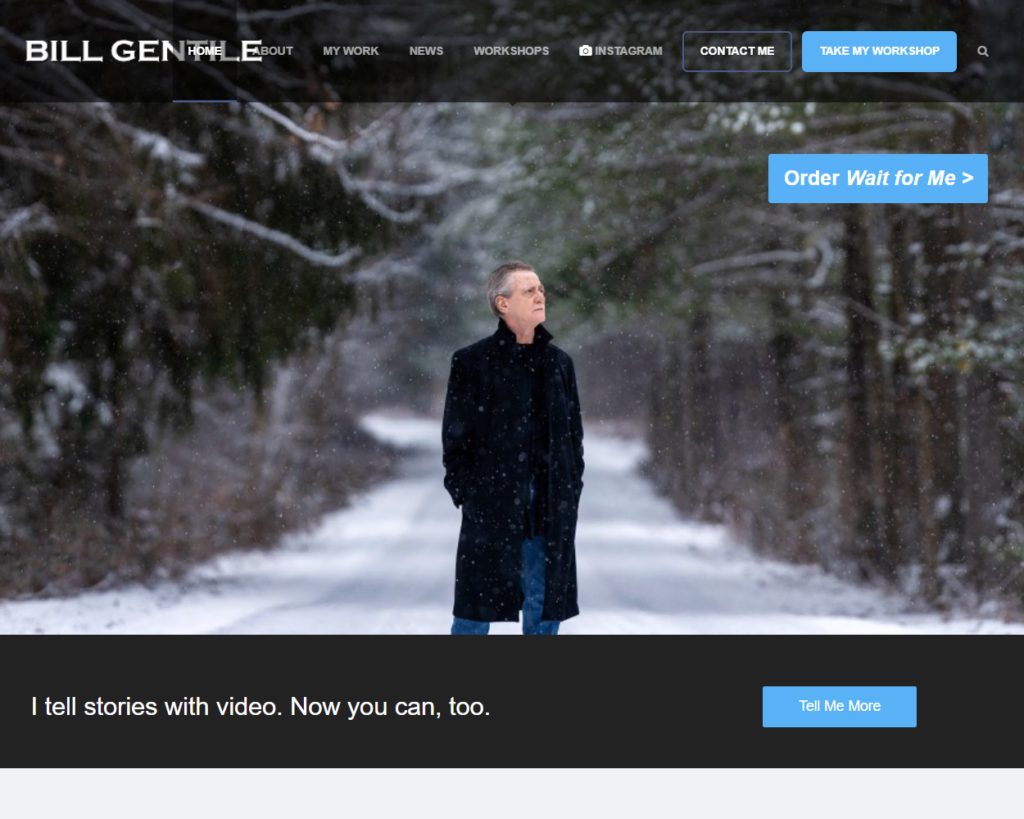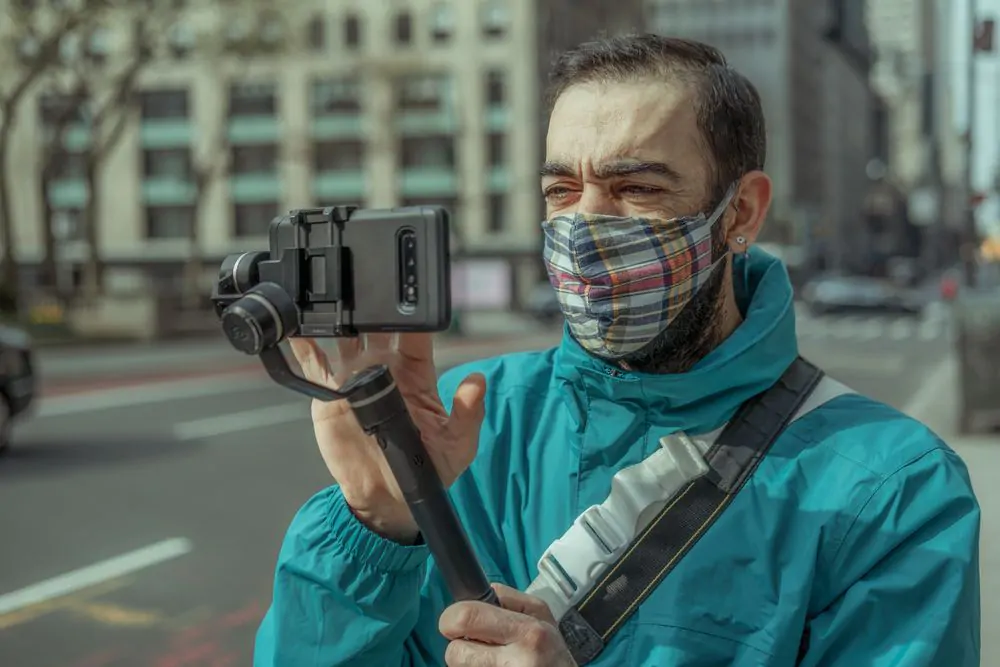Discover what is backpack journalism in our expert guide. We discuss this type of media production and why it’s so popular with mass media.
Backpack journalism is a type of reporting where the journalist takes on multiple roles to produce the story. A backpack journalist is a reporter, but they also edit the story and provide the associated images and videos. Essentially, it describes a journalist who produces multimedia to go along with their own story.
The term ‘backpack journalism’ comes from the idea that reporters conducting this type of newsgathering keep everything they need in their backpacks. The tools of a backpack journalist are a laptop, a digital camera, and other media tools, such as an audio recording device.
Typically, a backpack journalist acts as more than a writer. They’re an editor, a producer and videographer. Therein lies the key to why this type of reporting has become so commonplace for those who want a good journalism career. It is cost-effective to hire one person with these three skill sets rather than four individual staff members. It also enables journalists to work for multiple types of media outlets and diversify their income.
It’s also practical if a journalist is capturing a story from a place that is not easy to get to and from. It also applies if a reporter is capturing breaking news, not on the newsroom’s agenda.
Contents
The Origin Of Backpack Journalism

The exact origins of backpack journalism are not certain. However, experts on the subject largely link it back to the 80s and 90s. In fact, renowned backpack journalist, Bill Gentile, traced its origin back to Epigmenio Ibarra, who was a reporter working in the 1980s in Central America.
Mr Ibarra was known for producing the news on his own when many of his contemporaries would have a team of three or four taking on the same stories. Mr Gentile discussed this when he wrote a blog on the subject. It read:
“Epi” was the first backpack journalism that I’ve ever known. In Central America during the 1980s, when the American and European television crews consisted of camera person, sound person, correspondent and producer, Epi was covering the conflicts alone, doing all those tasks — and doing them very well. He was the embodiment of what we define today as a backpack journalist
In North America, Video News International became known for its version of backpack journalism back in the 90s. A news story detailing the New York Times’ acquisition of the organization pointed out their different methodology when it came to reporting the news. It read:
“The New York Times Co. announced Friday it will buy a majority interest in Video News International, a worldwide video news gathering operation for television and cable networks, for an undisclosed price.
“(Video News International) specializes in low-cost TV news reporting by offering so-called small- format reporting with a single journalist equipped with a small video recorder. Large TV stations and TV networks frequently use four-member camera crews for news gathering”.
Journalism has always been an adaptable medium, with news organizations being skillful in reducing costs while ensuring stories are still reaching the right audience and being produced at a good level.
Thus, it makes perfect sense that backpack journalism became popular during the decades where it became practical due to advances in technology. Before that, quality cameras were too heavy to carry around.
Thus, as multimedia tools became more mobile and easier to use, reporters armed themselves with the right know how and started producing the stories. The advancement of technology is why this type of journalism is continuing to strive today.
The Future of Backpack Journalism

Aside from cost, backpack journalism is now a mainstay of most newsrooms due to the nature of modern storytelling. Broadcast journalism has changed from scheduled news programs to features on social media and video hosting platforms, as well as rolling 24-hour news.
Thus, there is simply more demand for video-producing journalists. The improvement in technology associated with backpack journalism has also been a feature in its popularity and journalists’ ability to meet the demand for video.
In the past, a cameraman or woman would have to carry a video camera that may be heavy and cumbersome to produce high-quality TV news. However, visual journalism has moved on. Journalists can now capture and edit news stories on their smartphones. In fact, some of these news stories are of significant quality and end up on national television news.
For example, Fergal Bowers, a reporter for Ireland’s national station, RTE, recently tweeted a picture of his colleague, George Lee. The photo shows Lee producing a news segment on COP27 using only his smartphone for the national news broadcaster.
American University professor Bill Gentile, who is a noted pioneer of “backpack journalism” pointed to the changing nature of storytelling when discussing the future of this type of journalism. He said:
“The visual storytelling language is the language of the future. The print language used in newspapers and magazines, for example, will never be replaced by the visual language but, for a number of reasons, the visual language increasingly permeates every form of communication and every professional field”.
In the past, before cellular phones became so advanced, remote backpack journalists may have even had to use satellite phones to contact their newsrooms. Thus, it’s not just the cost that has helped increase the popularity of this type of journalism. Changes in technology and in the platforms and methods news are now distributed have also affected its rise in popularity.
Criticisms of Backpack Journalism
One obvious criticism of backpack journalism is that it requires one reporter to be a jack of all trades. For instance, they have to write their script while also shooting and editing the story. Thus, they are doing several jobs at once.
This, of course, has the potential to be damaging to the final product. That is because the level of multi-tasking involved could lead to either a skill shortage in one particular area or human error in producing the story due to being overworked. Lou Ureneck of Boston University’s journalism department articulated this point by discussing the issue in a TVNewser article. He said:
“(Backpack journalism) doesn’t allow for the reporter to focus on gathering information, which is the principle mission of reporting. It’s not like walking and chewing gum at the same time. It’s like driving and trying to read a map.
“Being a reporter is a fully engaging task.”
Another criticism of the practice is that having just one person produce stories daily can lead to that person not realizing their own errors.
Charles Bierbauer, a former correspondent at CNN and ABC made this point. He said: “There’s always the potential for missing something if you’re trying to do three things at once. There’s a lot of value in having a two or three-person team because it gives you more eyes and ears covering the story”.
There is also the worry that the practice could lead to redundancies in the industry due to one reporter doing the filmmaking side of reporting, as well as the presenting and the editing. Some say the increasing demands give weight to the argument that journalism is dying.
However, others argue journalism is an adaptable medium and backpack journalism is a symptom of its evolution. As this avenue becomes more commonplace, so will the tools and skillsets required to produce reports of the highest quality. If you like this article and want to become a backpack journalist, check out our guide to the best journalism tools.
